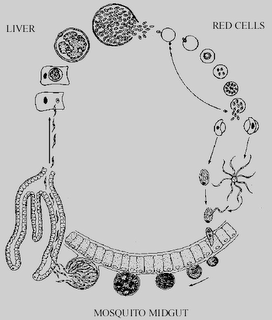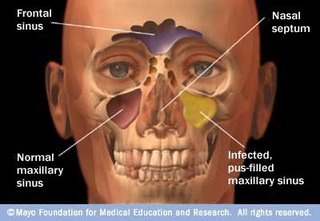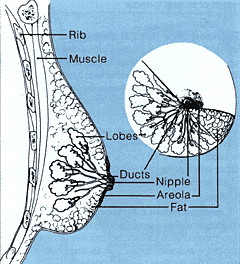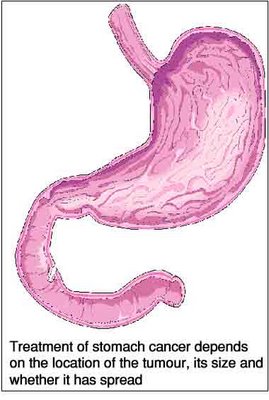Depending on the type and stage of stomach
cancer, surgery may be used to remove the
cancer and the part of the stomach where it is attached. The surgeon will try to leave behind as much normal stomach as possible.
Currently, surgery is the only way to cure stomach
cancer. If a patient has a stage 0, I, II, or III
cancer and is healthy enough, an attempt should be made to treat the
cancer by completely removing it. Even when the
cancer is too widespread to be removed completely by surgery, most patients are helped by an operation because the surgery may help prevent bleeding from the tumor or prevent the stomach from being blocked. This type of surgery is called palliative surgery, meaning that it relieves or prevents symptoms but it is not expected to cure the
cancer.
The particular operation performed usually depends on what part of the stomach is involved and how much
cancer is in the surrounding tissue. There are 3 kinds of surgery used:
Endoscopic mucosal resection: In this procedure, the
cancer is removed through an endoscope. This can only be done for early cancers where the chance of
spread to the lymph nodes is very low.
Subtotal gastrectomy: This operation is recommended if the
cancer is in the lower part of the stomach closest to the intestines. Only part of the stomach is removed, sometimes along with the first part of the small intestine (the duodenum). With only part of the stomach removed, eating is much easier than with removal of the entire stomach.
Total gastrectomy: This operation involves the total removal of the stomach, and is recommended if the
cancer is in the middle or upper part of the stomach. If you have a total gastrectomy, the surgeon will try and make a new "stomach" out of intestinal tissue. Usually the end of the esophagus is attached to part of the small intestine and some extra intestine is also attached. This can make room for food to be stored before moving down the intestinal tract, and will allow you to eat some food before getting filled up. No matter how effective this is, people who have a total gastrectomy can only eat a small amount of food at a time. Because of this, they must eat more often.
Stomach
cancer often spreads to lymph nodes and these should also be removed. This is a very important part of the operation. Many doctors feel that the success of the surgery is directly related to how many lymph nodes the surgeon removes. In addition, stomach
cancer may also
spread to lymph nodes that are farther away in the abdomen. Some surgeons feel that these also must be removed. This is still uncertain though and many surgeons are reluctant to perform such an extensive operation because it causes more complications.
Surgeons in Japan have had very high success rates by removing all the lymph nodes near the
cancer. Surgeons in Europe and the United States have not been able to equal the results of the Japanese surgeons. It is not certain whether this is because the Japanese surgeons are more experienced in this operation (because stomach
cancer is much more common in their country) or the Japanese patients have earlier stage disease and are healthier. Whatever the answer, it takes a skilled surgeon who is experienced in operating on stomach
cancer to remove all the lymph nodes successfully. It is important you ask your surgeon about his or her experience in operating on stomach
cancer. Studies have shown that the results are better when both the surgeon and the hospital have had extensive experience in treating patients with stomach
cancer.
The spleen is a collection of immune system cells and tissues that filter the blood to remove worn-out blood cells. It is located next to the stomach. If a
cancer has extended beyond the stomach to the spleen, the spleen is usually removed together with the stomach, lymph nodes, and omentum.
Many surgeons believe that if they remove all the lymph nodes near the stomach, they improve the chance that their patient will be cured. Surgeons in Japan have had very high success rates by removing all the lymph nodes near the
cancer. Surgeons in Europe and the United States have not been able to equal the results of the Japanese surgeons. It is not certain whether this is because the Japanese surgeons are more experienced in this operation (because stomach
cancer is much more common in their country) or the Japanese patients have earlier stage disease and are healthier. Whatever the answer, it takes a skilled surgeon who is experienced in operating on stomach
cancer to remove all the lymph nodes successfully. It is important you ask your surgeon about his or her experience in operating on stomach
cancer. Studies have shown that the results are better when both the surgeon and the hospital have had extensive experience in treating patients with stomach
cancer.
Surgery for stomach
cancer is difficult and complications can occur. Some of these include bleeding from the surgery, blood clots, and damage to nearby organs such as the gallbladder and pancreas during the operation. Rarely, the connections between the ends of the stomach and esophagus or small intestine may not hold together completely and leak. During the 1950s, nearly 10% of people died after this surgery because of complications. Thanks to improvement in surgical techniques, only about 1% to 2% of people die after surgery for stomach
cancer. This number is higher when the operation is more extensive as in when all the lymph nodes are removed. Several groups of surgeons have reported that as many as 5% to 15% of their patients die from the surgery when the surgeons try to remove all the lymph nodes. This number is lower in the hands of highly skilled and experienced surgeons.
You may develop other side effects after you have recovered from surgery. Some of these are frequent
heartburn, abdominal
pain particularly after eating, and vitamin deficiencies. The stomach is important in helping the body absorb certain vitamins. If certain parts of the stomach are removed, doctors routinely prescribe vitamin supplements, some of which can be taken only by injection. Changes in your
diet will often be necessary after a partial or total gastrectomy. The most important change is that you will need to eat smaller, more frequent meals.
Because of these problems, it is important you discuss with your surgeon how big an operation he or she intends. Some surgeons try to leave behind as much of the stomach as they can to allow patients to be able to eat more normally afterward. The tradeoff is that the
cancer might be more likely to come back. The type of surgery should be decided in a discussion between patient and
doctor. It cannot be emphasized enough that your surgeon must be highly skilled. He or she should be experienced in treating stomach
cancer and able to perform the most up-to-date operations to reduce your
risk of complications.







